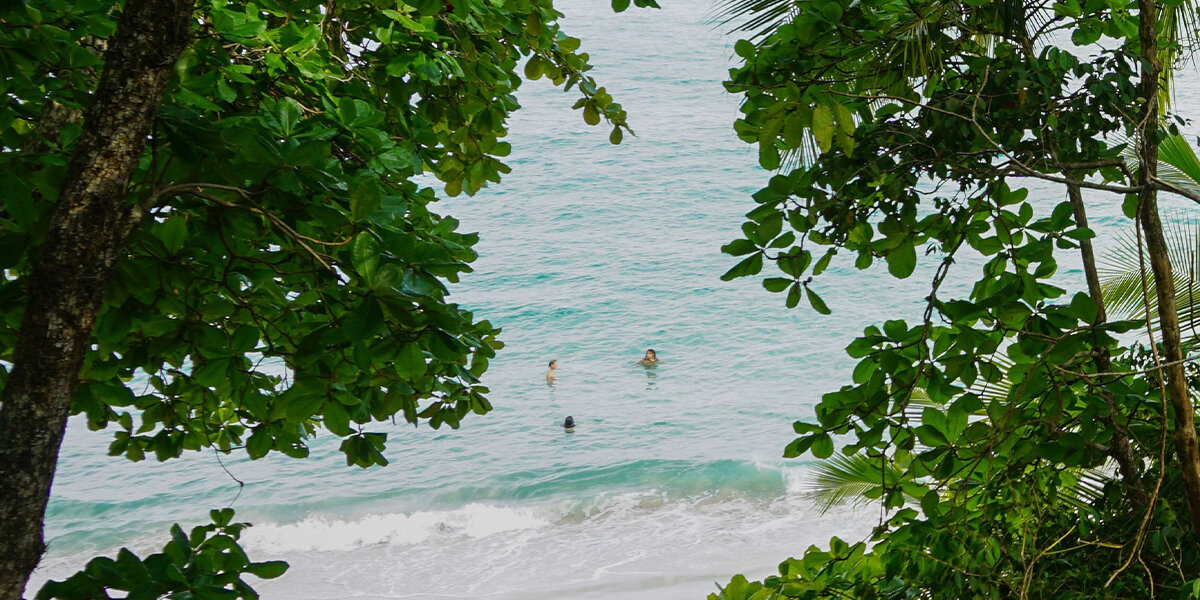
Dome, sweet dome
Utopian visionaries see profits – and longer lives – floating off Costa Rica
For science fiction fans, it’s the opportunity of the millennium – a shot at a real-life utopia. For skeptics, it's a wacky plan to create a floating city outside the sovereignty of any recognized nation. On the map, someday, it could be etched as Celestopea.
Celestopeans, an international group of idealists planning to colonize Earth's oceans, are looking for investors. Critics may write them off as madcap dreamers – or dismiss their mission as an exercise for a philosophy class – but the Celestopean faithful vow to secure their place among the world's visionaries.
"Most people have a difficult time seeing things too big and too far into the future," says U.S. citizen Jesse Love, who will help engineer the plans from which this floating city will be built. "And what we're doing is very big, and very far off into the future. We're not naive enough to think this will be easy. We're just taking it one step at a time."
Celestopea, according to the plan, will be a series of 22 self-sufficient, semi-autonomous floating cities set up over the next 100 years. The first is slated for the balmy waters off the Pacific coast of Costa Rica, nearly 200 miles west of the sleepy beach town of Nosara, on the Nicoya Peninsula.
Floating beyond Costa Rica's 12-mile territorial limit, Love explains, the island will he legally independent. But it will retain economic ties to the mainland because its sea mount--the underwater mountain chain to which the city will be anchored – falls within the 200-mile economic jurisdiction of Costa Rica. Later cities, regardless of where they are located, are expected to be situated beyond the 200-mile limit.
A utopian city is not an investment for those who catch their breath with each stock market dive. Links to investment opportunities on the Celestopea web page, www.celestopea.com, clearly note there are no refunds and that investors risk a 100% loss. Although only 50 people make up the project's core, some 600 have expressed interest in this futuristic Shangri-La, say the future waterborne colonists.
Celestopeans maintain that societal ills spring from a mass consciousness that is not conducive to happiness, health, prosperity and longevity. The goal is to create a utopia free of depression, racism and poverty. They also hope to double the average lifespan. They'll do this working just 24 hours a week, amusing themselves by frolicking in the city's natural swimming pools, then spending the rest of their time harvesting energy-rich algae to feed starving children in Ethiopia. Their environmentally friendly metropolis, they say, will bob against a backdrop of sparkling waves and muted sunsets.
No smoking, drinking or pets. It may bill itself as utopia, but that doesn't mean Celestopea will be void of rules. Pets will be banned to eliminate allergies and the spread of parasites. Celestopeans won't smoke or drink. They will exercise at least 45 minutes a day, watch fewer than 10 hours of television weekly and eat a mainly vegetarian, low-sugar, low-fat diet. And there's no room for complainers. Celestopeans will sign contracts accepting these rules, and must pass a try-out residency of three to six months before being permanently voted into the society. Those who violate the terms can be banished.
Skeptics might wonder how long until this new age Club Med deteriorates into Lord of the Flies. The Celestopeans are undaunted.
"We don't want fanatics. We want people who show good judgment, common sense and compassion," insists Love. "Most of your cloistered communities and cultlike groups, in every one of them, the common denominator is a doomsday belief. Ours is the opposite. It's abundance, abundance for ourselves and the rest of our fellow citizens on planet Earth."
For those unwilling to renounce their vices, Celestopea offers an investment option. Time, labor and capital are all assigned a dollar value--and Celestopeans say everyone involved in the project could become near millionaires. Investors start receiving annual profit-sharing dividends when there is a community of at least 500 living on the first Celestopean city, which is slated to open in 2025.
The first US$275 million city will float on the ocean and will accommodate between 5,000 and 10,000 residents. At the center of the complex will be an island; clustered around the island will be floating sea domes where residents will live. Celestopeans plan to start manufacturing and selling the $30,000 domes – which can double as houseboats – to bankroll money for the project.
Another source of income will be Celestopea Wave Breakers, a breakwater technology patented by Love. He says a factory will be set up to begin manufacturing the environmentally friendly breakwaters this year.
But the real profits for investors are expected to come from Celestopea's energy source, an Ocean Thermal Energy Converter (OTEC) – a new technology that uses the temperature variation between ocean surfaces and ocean depths to create a pollution-free source of energy. A single converter costs $175 million but, once Celestopeans have it operating, they say they will make money by selling their surplus energy, byproducts and desalinated water.
"Technologically, it's feasible," says Eduardo Cespedes, a Costa Rican and one of Celestopea's recent converts. Cespedes says wanting to help better mankind is a universal desire, noting that there are now future Celestopeans in 36 countries, including South Africa, Argentina and Indonesia.
Asked his opinion, architect Alvaro Rojas, founder of the private University of Design in the eastern San Jose district of San Pedro, says he admires visionaries because they challenge society to improve. But he's not ready to put his money down yet. "We don't need to go to Mars to create a better life," says Rojas. "I would leave the oceans alone."
COPYRIGHT 2000 Freedom Magazines, Inc.
No portion of this article can be reproduced without the express written permission from the copyright holder.
Copyright 2000, Gale Group. All rights reserved. Gale Group is a Thomson Corporation Company.
